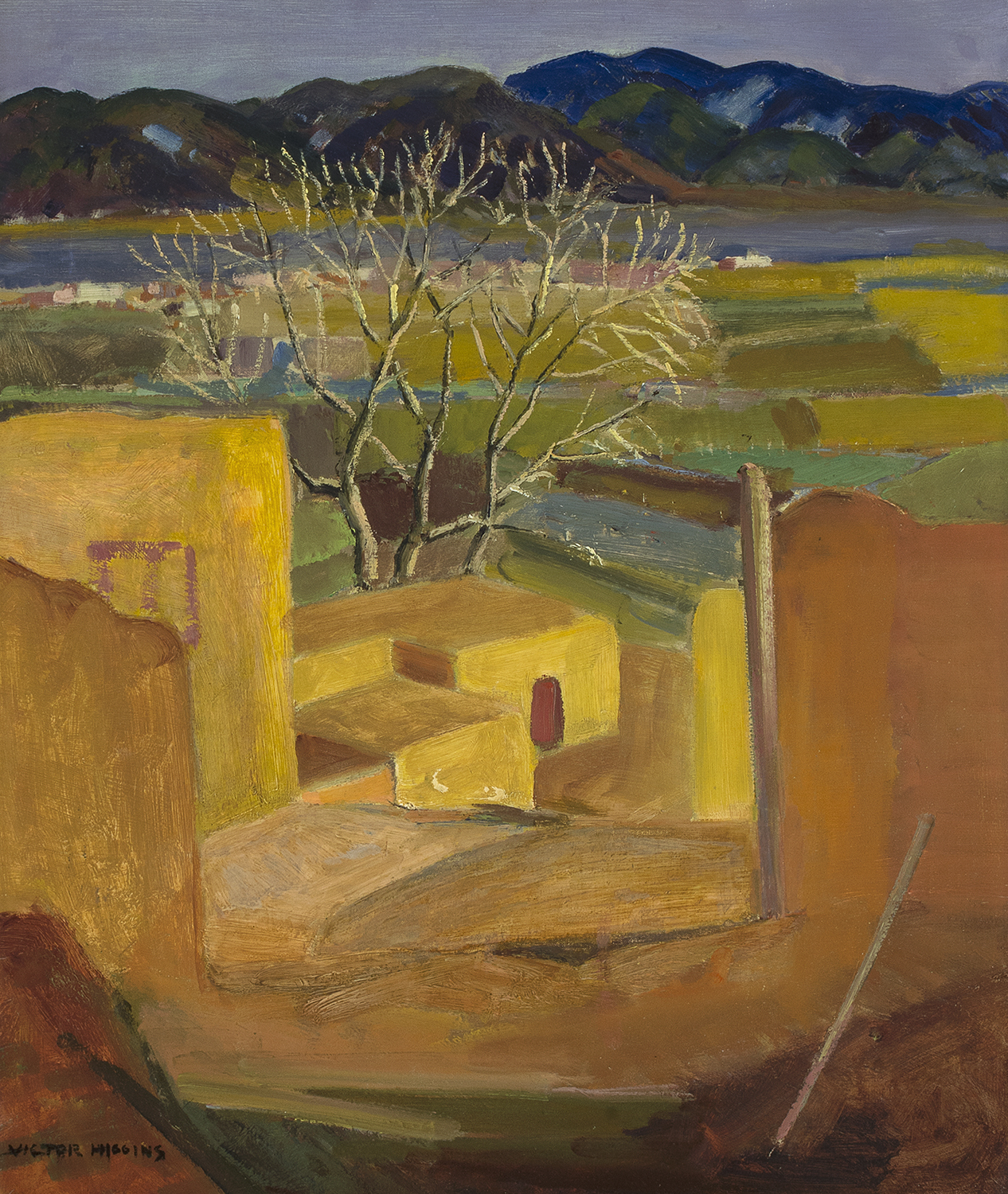For More Information
Ana Archuleta
505 954 5714
aarchuleta@gpgallery.com
Prompted by Chicago Mayor and art patron Carter Harrison, Victor Higgins made his first visit to Taos in 1914 and established permanent residency there the same year. In Taos, the seemingly unchanged lifestyle of the Pueblo Indian provided a key subject, which Higgins used to express his belief in the dignity inherent in a lifestyle of modesty and self-reliance. In 1915 Higgins received his first one-man show at the Old Palace in Santa Fe, and in 1917, he was invited to join the Taos Society of Artists along with Walter Ufer. Although Higgins attended most meetings between his induction in 1917 and the time the Society disbanded in 1926, there is no evidence to suggest he was a particularly involved or enthusiastic participant. By 1920, rather, Higgins had begun a slow separation from the Taos Society of Artists, spending more time with the progressive Andrew Dasburg and his student Kenneth Adams.
After the Taos Society disbanded, Higgins increased his forays into cubist idioms. When John Marin, a member of Alfred Stieglitz’s avant-garde circle in New York, arrived in Taos in 1929, Higgins began to concentrate more fully on pattern and also began working in watercolors. While the extent of Marin’s influence on Higgins remains unclear, the increasingly abstract nature of his work in the late 1920s and 30s suggests a significant encounter with something new in American art, as well as a logical continuation of his natural tendency towards experimentation.





